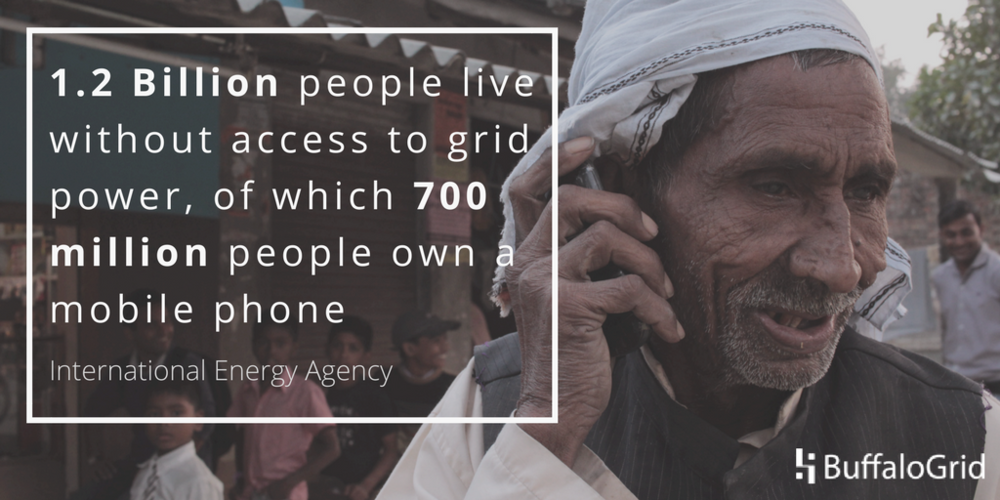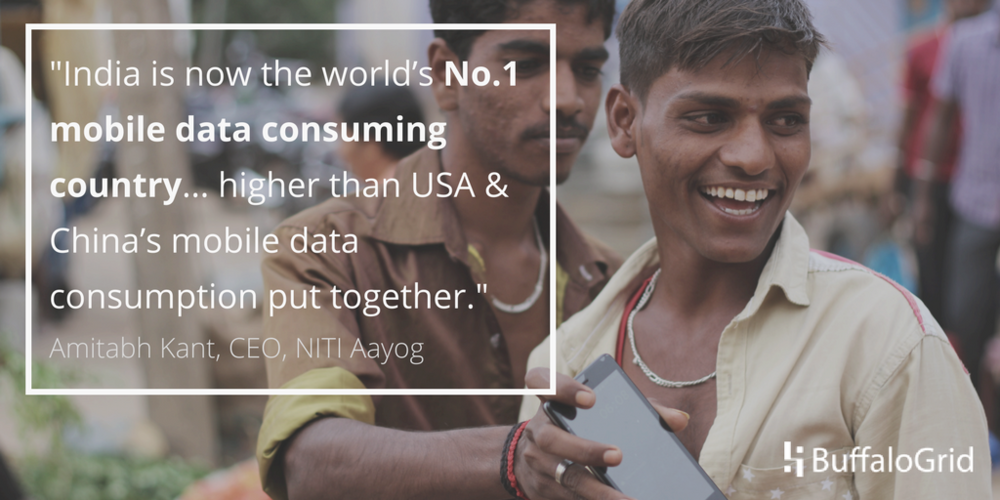We use data every day to inform our work to connect the next billion. But it’s improving the lives of the people behind these numbers that drive us.
Here’s five facts on why bringing internet and mobile charging to the next billion matters, and how Mobile Network Operators (MNOs) and internet service providers (ISP) can unlock the opportunity.
So, let’s start with the big one...
1.2 BILLION PEOPLE LIVE WITHOUT POWER, YET 700 MILLION OF THEM OWN A MOBILE PHONE
This stat from the IEA’s 2017 Access to Energy report tells us two things.
Firstly, connectivity is increasing and that’s great. More people than ever are using mobile phones to entertain themselves, stay in touch with family members, access essential information and, in many cases, pay for goods and services.
The problem? Owning a phone doesn’t mean anything if you don’t have somewhere to charge it. This is particularly a challenge for those in rural areas.
The energy access problem is real and a key factor that impacts the amount of time people can use their phone. In fact, the GSMA has found that providing access to energy positively impacts pay-as-you-go spend.
With Google launching the first sub-$50 smartphone at MWC 2018, and mobile network operators (MNOs) offering increasingly low price data packages, we don’t see the power problem disappearing anytime soon.
11% OF THE WORLD’S POPULATION, 830 MILLION PEOPLE LIVE IN RURAL INDIA
Demand for power remains higher than production in India, despite rural electrification remaining a key focus for the government. This means that many rural homes go without electricity and major cities still experience blackouts.
If rural India was a country, it’d be the third biggest. There are hundreds of millions of people whose only hurdle to using their phone more is finding the power to charge it. In fact 88% of Indians now own a mobile phone according to a 2016 study by the People Research on India’s Consumer Economy (PRICE)
Let the numbers sink in while you realise the scale of the opportunity available here.
INDIA IS NOW THE WORLD’S TOP DATA CONSUMING COUNTRY
That’s right. Even with less than half of rural households in India having a connection to the grid, it hasn’t stopped India getting online. The latest Nokia Mobile Broadband Index revealed that 4G was the number one reason for increased mobile data consumption in 2017, capturing 82% of traffic. This is in part due to Reliance Jio's contiuned domination of the market, with its network performing faster than both Airtel and Vodafone in February 2018.
With an increase in access to low-cost mobiles and affordable power to charge them, data consumption is expected to increase further in 2018 and beyond. As Gulzar Azad of Google Connectivity points out in a report on Indian data consumption, users with low literacy rates rely on data intensive voice search and video more than anyone else.
But it isn’t just India that is in the midst of a mobile-driven digitisation…
THE MOBILE MONEY INDUSTRY PROCESSES OVER $1BN A DAY
Driven by cost and convenience, the latest consumers to join the digital revolution are mobile-first and, in some cases, mobile-only.
With over half of Sub-Saharan Africa still without a bank account, mobile payments have become a dominant force alongside cash. In South Asia the trend is similar, with EY finding 19% of Indian citizens still don’t have a bank account.
This is why we built BuffaloGrid to integrate with popular mobile wallets and payment platforms like M-pesa and PayTM, making it easy for end users and the organisations operating a network of hubs.
Financial inclusion is key to growing an economy for everyone, and access to affordable energy is what is needed to make it work.
POWER ACCOUNTS FOR NEARLY 40% OF THE MONTHLY COST OF OFF-GRID SMARTPHONE OWNERSHIP
For much of the world getting hold of a phone isn’t the hard part anymore. The real cost comes from data and keeping it charged. This research carried out by Bloomberg New Energy Finance and Facebook in Rwanda echoes what we’ve seen in countries across South Asia and Sub-Saharan Africa.
As newer, cheaper smartphones are released, this power problem will get worse. More streaming, more downloading and more talking all mean more charging. Remember, smartphones require at least 10x more power than their feature phone counterparts.
Capable of charging 28 smartphones at once on solar energy alone, mobile network operators can use the BuffaloGrid Hub to provide affordable power and pass the savings on to customers. This means people can spend more time connected and with money in their pockets to spend on other products and services. Off-grid shouldn’t mean offline.





